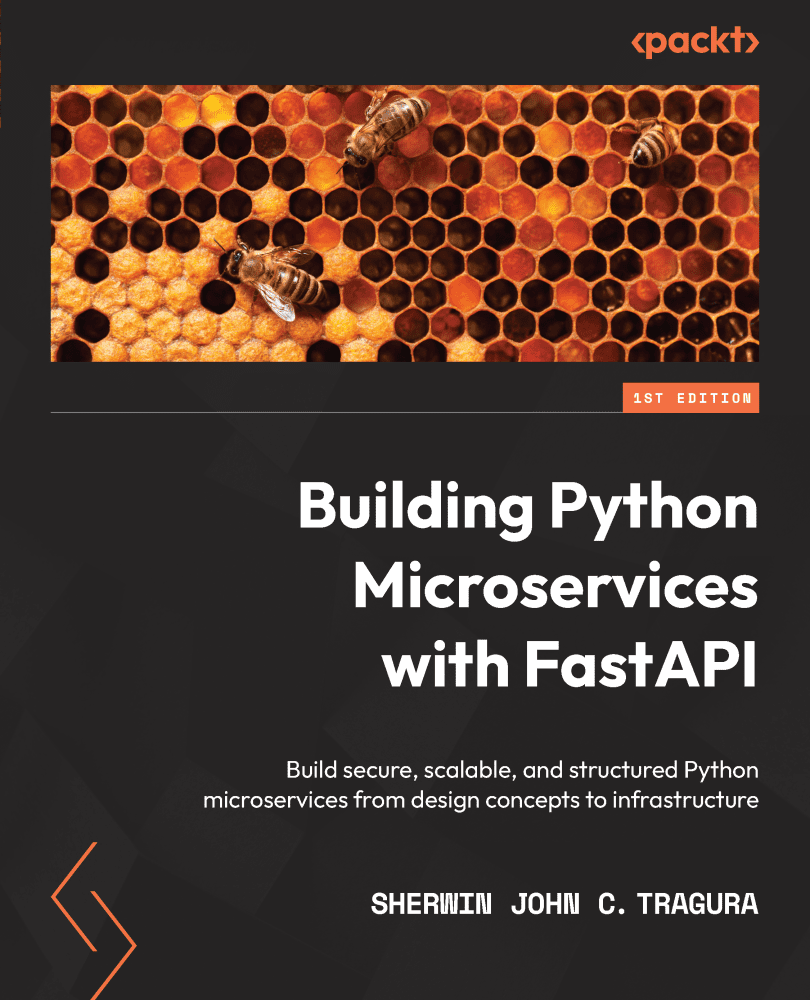Sherwin John Tragura is the author of Building Python Microservices with FastAPI, we got the chance to sit down and find out more about his experience of writing with Packt.
Q: What are your specialist tech areas?
Sherwin: Java, Python, C#, .ASP .NET, Spring Framework 4/5, Django, Flask, Tornado, Go, NodeJS Frameworks (React, Angular, and Vue), Alfresco 4/5
Q: How did you become an author for Packt? Tell us about your journey. What was your motivation for writing this book?
Sherwin: I have started as a Technical reviewer way back 2012. Someone from Packt emailed me and asked me to do a technical review on Alfresco, which was my field of expertise that time. Then 2014, someone offered me an opportunity to write a book on Spring 4.x, and I said YES! So from then on, it was a great adventure for me to share my expertise and knowledge to the world through Packt’ s platform. And I am very grateful and happy forever for the opportunities given to me by Packt. Thank you so much and more power to Packt.
Q: What kind of research did you do, and how long did you spend researching before beginning the book?
Sherwin: I am the person who loves to innovate and explore new things. I love to use underrated but powerful tools, frameworks, and concepts in my software development and trainings to let people know that there are still undiscovered gems out there that can be very useful to the IT world not only the legacy and the popular ones. I remember using Opentaps as an ERP platform way back 2009 and that time nobody knows or heard Opentaps. So I love making unpopular things popular in my own way.
Q: Did you face any challenges during the writing process? How did you overcome them?
Sherwin: Of course. First, the resources. Discovering and utilizing something new means digging into impossible details about the matter with a not much time and resources. Constraint is a problem always. Second time, you have other things to do than doing the research. If the subject matter is really difficult to explore and write, the whole adventure will really eat all your time. Your work is at stake. But at the end of the day, it is worth it to write something different and new.
Q: What’s your take on the technologies discussed in the book? Where do you see these technologies heading in the future?
Sherwin: I am a Django and Flask developer and I am seeing FastAPI to ovecome the two in the future in terms of flexibility, adaptability, and easy development. The feeling is the same when I was using Spring 3.x way back 2005.
Q: Why should readers choose this book over others already on the market? How would you differentiate your book from its competition?
Sherwin: It a reference book, and at the same time blueprint style. Working application for each chapter is available to backup the concepts discussed in each chapter. I use a straightforward and technical approach in delivering the concepts. And I see to it that the current software development standards are applied also.
Q: What are the key takeaways you want readers to come away with from the book?
Sherwin: I want them to love Python. I want them to know that there is a powerful framework called FastAPI in Python which is better than Django and Flask when it comes to API development. I want them to learn API and microservice development easily using FastAPI. And I want the community for FastAPI to grow and help contribute to the improvements of the framework.
Q. What advice would you give to readers learning tech? Do you have any top tips?
Sherwin: Identify first what areas they want to focus. There are new discoveries every time for API development, front-end frameworks, data science, ORM/ODM, backend programming, or web development. They must know what interest them and focus on the technologies that surrounds that interest. Otherwise, they might be wasting their time and effort. Then, they should know what to do with their discovery. They can use their research to train people, teach students, submit them to ACM research bins, or write a book.
Q. Do you have a blog that readers can follow?
Sherwin: Not yet but I am planning soon.
Q. Can you share any blogs, websites and forums to help readers gain a holistic view of the tech they are learning?
Sherwin: Sometimes I just visit https://www.geeksforgeeks.org/ and https://dzone.com/
Q. How would you describe your author’s journey with Packt? Would you recommend Packt to aspiring authors?
Sherwin: Yes of course. I recommend Packt.
Q. What are your favorite tech journals? How do you keep yourself up to date on tech?
Sherwin: Dr. Dobbs, C/C++ Magazine, Java Journal Dev
Q. How did you organize, plan, and prioritize your work and write the book?
Sherwin: I first create a general description of the topic, objective, purpose, and simple outline. Then, I do some background check and little research to expound on the outline. I rewrite the outline with details. And then hibernate. Then, finalize to derive a good research proposal.
Q. What is that one writing tip that you found most crucial and would like to share with aspiring authors?
Sherwin: Do not write anything that you do not know best! Be sure you are a credible and reliable resource person to write on a subject matter. Be sure to put some limits on what you will write. Everything must be based on experience.
Q. Would you like to share your social handles? If so, please share.
Sherwin: https://www.facebook.com/sjctragura/ and https://www.linkedin.com/in/sjctragura
You can find Sherwin’s book on Amazon by following this link: Please click here









